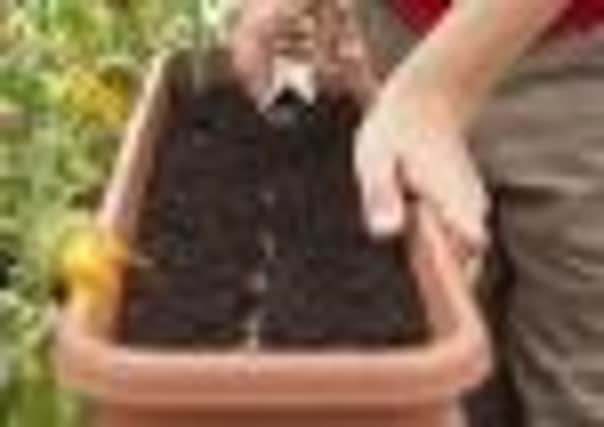Get down to earth and try a taste of growing your own


But if you’re one of the few who has steered away from veg, perhaps preferring your flower borders to look ordered and formal, now’s the time to create some space, especially for edibles and think about what you are going to sow.
Check the soil temperature first, because if you sow too early the seedlings will struggle and become vulnerable to pests and diseases. It’s likely that the recent cold snap will have delayed many sowings for a few weeks.
Advertisement
Hide AdAdvertisement
Hide AdAs a general guideline, in mild areas early sowings can be made into the ground towards the end of February, but in colder areas you need to cover seed beds with plastic sheeting or cloches for at least three weeks before sowing, to warm up the soil. But nothing is set in stone.
Use a soil thermometer to check the soil temperature in the morning, pushing it 5-10cm (2-4in) into the soil. If it remains above 7C (45F) for a week, you should be safe to start sowing early vegetables in prepared beds. Seed sown before that temperature is reached will germinate, but will be more susceptible to soil diseases.
To prepare a seed bed, the soil needs to be broken down to a fine tilth and the surface levelled off with a rake – it should end up like a fine, crumbly texture. Throw out any stones, weeds and other debris you come across while doing this. It’s also advisable to add some fertiliser such as chicken manure pellets or blood, fish and bone to the soil before sowing.
Then you can grow a wealth of vegetables, from spring onions, leeks, beetroot and radishes, to carrots, parsnips and kohl rabi. If the area you have is too small to rotate crops, then grow what you like where you can, but don’t plant the same crop in the same place two years running.
Advertisement
Hide AdAdvertisement
Hide AdAlways sow vegetable seeds in straight rows, which makes it easier to hoe weeds out during the growing season.
Set out a garden line or pegs and string to mark the position of the rows and use the row spacing for each vegetable following the instructions on the seed packet. Allow for different spacing between rows of different crops, so that a larger one doesn’t swamp a smaller one.
Then make a seed drill using a narrow trowel or stick and sow the seeds as evenly as you can in the bottom of the drill.
After sowing, cover big seeds such as peas with around 1cm of soil, but less for smaller seeds. Water thoroughly with a fine sprinkler which won’t disturb the soil or wash away the seeds afterwards.
Advertisement
Hide AdAdvertisement
Hide AdCarrots can be sown at two-week intervals to provide a succession of crops during the year. Early potatoes can be chitted, putting them upright in seed trays in a frost-free place such as a windowsill with the end with the most eyes uppermost. They should be kept in a cool, light place so that the shoots grow strong.
Once they have sprouted, select two or three fat shoots to grow on and rub out the rest. Seed potatoes can be bought from garden centres. Don’t risk using old ones from the supermarket because they are more likely to become diseased. One of the earliest vegetables to crop is the broad bean. Sow seeds in pots in a cold frame or greenhouse, which will produce seedlings ready to plant out in March.
Quick-growing lettuces such as ‘Little Gem’ can be sown in late February or March in mild areas, in rows 15cm (6in) apart. If the soil is workable, make a first sowing of the quick-growing carrot variety, ‘Early Nantes’.